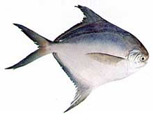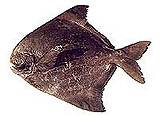| This resource was monitored at Veraval, Bombay, Karwar, Calicut, Cochin, Tuticorin, Mandapam, Madras, Visakhapatnam and Kakinada Research Centres. Bulk of the catch is taken by the trawl but considerable landings take place by other gears like gillnet and dol net in certain regions particularly off Maharashtra and Gujarat.
|
The estimated annual landings of croakers during 1996-98 were 161080 t and 158270 t and 199740 t respectively. The landing in 1998 was the highest so far and this is brought out by the increased landings in Maharashtra and Gujarat. Protonibea diacanthus, Otolithus cuvieri, Johnieops sina, Nibea maculata, Pennahia macrophthalmus, Johnius carutta, J. vogleri, J. macrorhynus are the dominant species along different regions of the Indian coast. Data on species landed, Length composition of catch of the dominant species and aspects of biology such as maturation, spawning, and food are collected and processed. |




